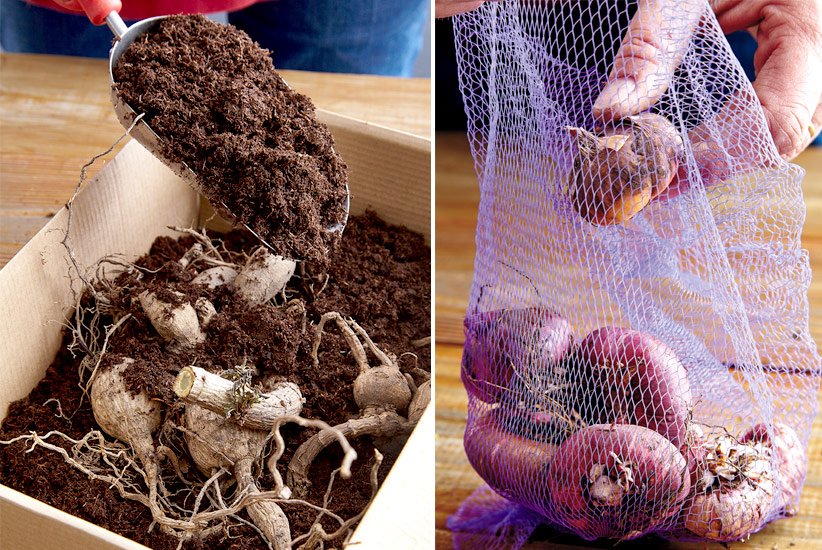To store flower bulbs successfully, start by ensuring they are clean and dry. Place them in a cool, dark location with good airflow to prevent mold or rot. Remember to label the bulbs for easy identification come planting season. Proper storage is key to ensuring your flower bulbs remain healthy and ready to bloom when the time comes. So, let’s dive into the essential tips and tricks on how to store flower bulbs effectively.
How to Store Flower Bulbs: A Comprehensive Guide
Welcome, garden enthusiasts! If you’re wondering how to keep your precious flower bulbs safe and sound until the next planting season, you’ve come to the right place. Storing flower bulbs properly is crucial to ensure they remain healthy and vibrant for the following year. In this detailed guide, we’ll walk you through everything you need to know about storing flower bulbs so you can keep your garden blooming beautifully year after year.
Why Is Proper Storage Important?
Before we delve into the nitty-gritty of storing flower bulbs, let’s understand why it’s essential to do it right. Flower bulbs store all the nutrients and energy they need to bloom in the following season. Improper storage can lead to these nutrients being depleted, resulting in weak or stunted growth when you finally plant them. Proper storage ensures that your bulbs remain healthy, vibrant, and ready to dazzle your garden when the time comes.
When to Store Flower Bulbs
Knowing when to store your flower bulbs is crucial for their long-term health. Generally, it’s best to store flower bulbs after they have finished blooming and the foliage has withered. This is usually in the late spring or early summer, depending on the specific variety of flower. It’s important to allow the foliage to die back naturally as this helps the bulb replenish its energy reserves for the next season.
Steps to Store Flower Bulbs:
Step 1: Digging Up the Bulbs
When the foliage has completely withered and turned brown, it’s time to dig up your flower bulbs. Use a garden fork or trowel to carefully lift the bulbs out of the soil, being careful not to damage them. Shake off any excess soil but avoid washing the bulbs as this can remove their protective outer layer.
Step 2: Cleaning and Inspecting
Once you’ve dug up your bulbs, it’s essential to clean and inspect them before storing. Remove any excess soil or debris by gently brushing the bulbs with your hands or a soft brush. Inspect the bulbs for any signs of damage or disease, discarding any that appear unhealthy.
Step 3: Drying the Bulbs
After cleaning and inspecting, allow your flower bulbs to dry thoroughly before storing. Place them in a warm, dry location with good air circulation for about a week. This step is crucial as it helps prevent mold and rot during storage.
Step 4: Choosing the Right Storage Container
When it comes to storing flower bulbs, choosing the right container is key. Opt for breathable containers such as mesh bags, paper bags, or wooden crates. Avoid airtight containers as they can cause moisture buildup, leading to rot. Make sure the container has enough room to store the bulbs without overcrowding.
Step 5: Providing Proper Storage Conditions
Store your flower bulbs in a cool, dark, and well-ventilated location. A temperature range of 35-50°F (2-10°C) is ideal for most flower bulbs. Avoid storing them in areas that are prone to extreme temperature fluctuations, such as garages or attics. Also, keep them away from direct sunlight as it can cause the bulbs to dry out.
Step 6: Periodic Checking
While your flower bulbs are in storage, it’s essential to check on them periodically. Inspect the bulbs for any signs of mold, rot, or sprouting. Remove any bulbs that show signs of damage to prevent it from spreading to the rest of the batch.
Common Mistakes to Avoid
Even seasoned gardeners can make mistakes when storing flower bulbs. Here are some common pitfalls to avoid:
Avoiding Proper Drying:
Rushing the drying process can lead to mold and rot. Make sure to allow your bulbs to dry thoroughly before storing them.
Incorrect Storage Temperature:
Storing bulbs in areas with extreme temperatures can damage them. It’s crucial to maintain a consistent and cool storage environment.
Overcrowding:
Storing too many bulbs in a small container can lead to mold and disease. Ensure there is enough space for air circulation between the bulbs.
Ignoring Regular Check-ups:
Neglecting to check on your stored bulbs can result in unnoticed issues such as mold or sprouting. Regular inspections can help catch problems early.
Congratulations! You are now equipped with all the knowledge you need to store your flower bulbs like a pro. By following the steps outlined in this guide and avoiding common mistakes, you can ensure that your flower bulbs remain healthy and ready to bloom when the next planting season arrives. Remember, proper storage is the key to a successful and vibrant garden year after year. Happy gardening!
Flower Bulbs : How to Store Amaryllis Bulbs
Frequently Asked Questions
How should I store flower bulbs before planting them?
It is essential to store flower bulbs in a cool, dry place with good air circulation before planting. Avoid storing them in areas with high humidity or direct sunlight, as this can lead to mold or premature sprouting. You can place the bulbs in a paper bag or a mesh container to allow for proper ventilation.
Can I store different types of flower bulbs together?
It is best to store different types of flower bulbs separately to prevent them from mixing or cross-contaminating. Each type of bulb may have specific temperature and humidity requirements, so storing them individually will help maintain their integrity until planting time.
How long can I store flower bulbs before planting?
The storage duration for flower bulbs can vary depending on the specific type of bulb. In general, most flower bulbs can be stored for a few months before planting. It is advisable to check the specific instructions for each type of bulb to ensure they are not stored for too long, as this can affect their viability and ability to bloom successfully.
Final Thoughts
In conclusion, proper storage of flower bulbs is crucial for their health and successful growth. Remember to store bulbs in a cool, dry place with good air circulation to prevent mold and rot. Check bulbs regularly for any signs of damage or disease. By following these simple steps on how to store flower bulbs correctly, you can ensure beautiful blooms in the next growing season.









